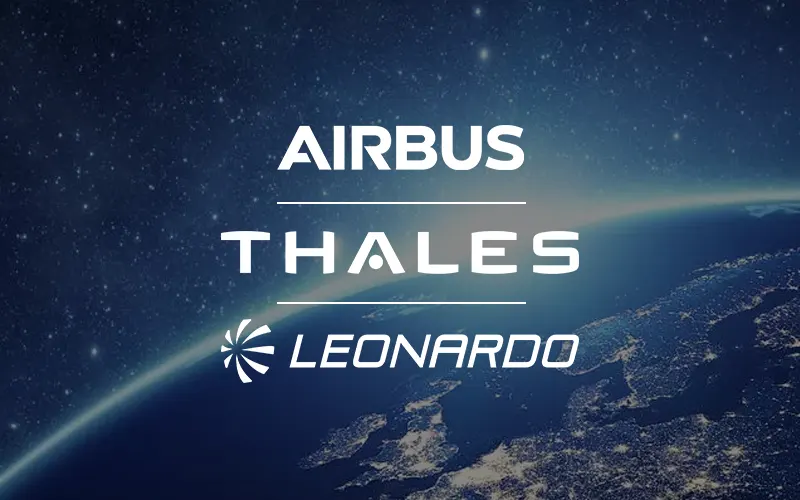 Credit: Airbus / Thales / Leonardo
Credit: Airbus / Thales / Leonardo
European aerospace giants Airbus, Leonardo, and Thales have signed a memorandum of understanding to combine their respective space businesses into a single new company. Ownership will be shared among the three parent firms, with Leonardo and Thales each holding a 32.5% stake, and Airbus holding the majority stake of 35%. The new company, which will employ approximately 25,000 people, will be managed jointly under a “balanced governance structure.”
The new company will combine the Space Systems and Space Digital divisions of Airbus Defence and Space, the Thales Alenia Space and Telespazio joint ventures of Leonardo and Thales, and Thales SESO from Thales. According to the joint press release issued on 23 October, the combined entity would have had an estimated annual turnover of €6.5 billion in 2024. For comparison, the Space Systems segment of Northrop Grumman generated $11.7 billion in 2024, while SpaceX is estimated to have brought in $13.1 billion.
During a press conference following the 337th ESA Council meeting in Paris, the agency’s Director General, Josef Aschbacher, stated that while he believed the merger would “make industry stronger and therefore more competitive on the world market,” it would represent a “change in the landscape” that the agency would have to take into account in its industrial policy and procurement negotiations.
While the Director General gave an overall positive assessment, that sentiment is not universally shared among ESA leadership.
“Having only one in the future is not too helpful,” European Space Agency Director of Operations Rolf Densing told Reuters in late September. “On the other hand, they need a critical mass of business, which I perfectly understand.”
According to the joint press release, the new company is expected to be operational in 2027. However, it adds that it is still dependent on the deal receiving regulatory clearances, a significant hurdle yet to be cleared. The agreement is also currently just a Memorandum of Understanding, which, while an important first step, is likely non-binding and subject to detailed negotiations and due diligence before a definitive merger agreement is signed.
